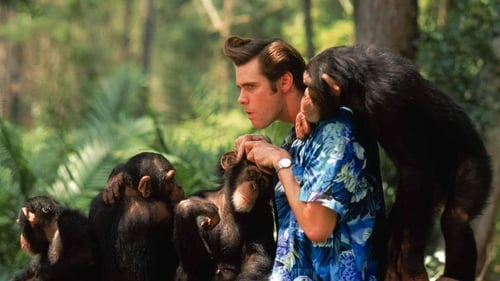
Production Manager
山岳地帯でのレスキューに失敗し、アライグマの命を救えなかったエースはチベットの僧院にこもり魂の救済を求めていた。だが、アフリカのある部族に伝わる聖なる白い大コウモリ“シカカ”が盗まれたと聞き、相棒の猿のスパイクと共にその救出に向かった。二つの部族の間で行われる結婚式の日までに“シカカ”が取り戻せないと、部族間で戦争が起きてしまうのだ……。

Production Manager
環境破壊企業EES社から某国での宣伝活動の仕事を受けた落ち目の俳優リッキー。彼は悪友と現地へ飛び、環境活動家の美女を上手いこと引っ掛け、3人で見世物小屋見物に立ち寄る。だが、そこの興行師は人を拉致してはEES製品でミュータントを生み出す狂気の科学者だった。

Director
Shopping Bag, Spirits and Freeway Fetishes: Reflections on Ritual Space explores nine Los Angeles based artists reflecting on ritual in their life and art. Artist David Hammons discusses the role of chance and improvisation in his work while working on sculpture on a waste site while N’Senga Nengudi talks about staging her performances in freeway underpasses. Spanning performance to spoken word, environmental sculpture to music each artist talks about how ritual and cultural traditions informs their work. This experimental essay intercuts interviews, documentation and photographs with the music of Don Cherry seeking to adjust the criteria and language used to talk about artists of colour.

Production Manager
Filmmaker Alicia Dhanifu, who appears in director Jamaa Fanaka’s Emma Mae, constructs a rigorous and beautifully rendered history of belly dancing — its roots and history, forms and meanings. The filmmaker performs this art as well, alone and with other dancers. —Shannon Kelley

Director
Made in collaboration with performer Yolanda Vidato, Water Ritual #1 examines Black women’s ongoing struggle for spiritual and psychological space through improvisational, symbolic acts. Shot in 16mm black-and-white, the film was made in an area of Watts that had been cleared to make way for the I-105 freeway, but ultimately abandoned. Though the film is set in contemporary L.A., at first sight, Milanda and her environs (burnt-out houses overgrown with weeds) might seem to be located in Africa or the Caribbean, or at some time in the past. Structured as an Africanist ritual for Barbara McCullough’s “participant-viewers,” the film addresses how conditions of poverty, exploitation and anger render the Los Angeles landscape not as the fabled promised land for Black migrants, but as both cause and emblem of Black desolation. (Jacqueline Stewart)

Director
Barbara McCullough‘s newest film, Horace Tapscott: Musical Griot, is a profound meditation on the importance of the black tradition to the music, art, history, and activism of Los Angeles and beyond. Horace Tapscott was an underappreciated musical genius and community activist deeply involved in one the most exciting periods of Los Angeles jazz history. Black-listed in the 1960s and ‘70s because of his political affiliations (his “Arkestra” was the band of choice to perform at political rallies), during the Watts Rebellion of 1965, police actually shut down his performances, accusing him of inciting people to riot with his music. Horace Tapscott: Musical Griot tells his story in the manner of a griot, or story-teller, who in West African societies maintain the legacy, knowledge, and history of their group traditions in oral form.





